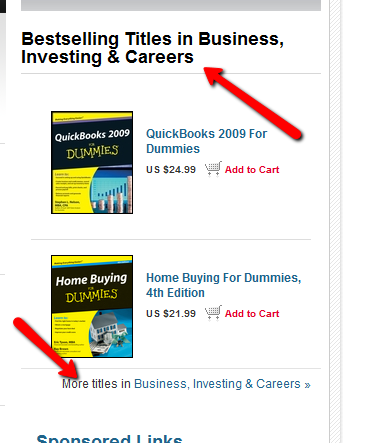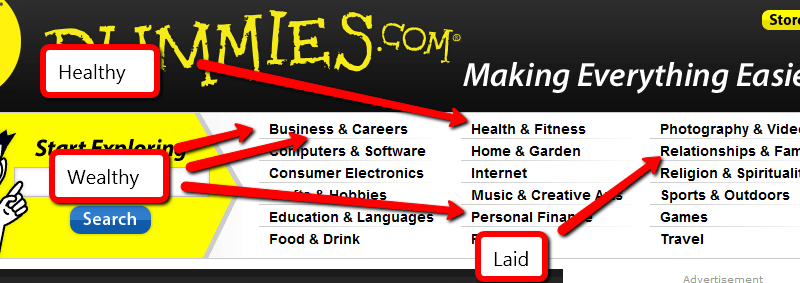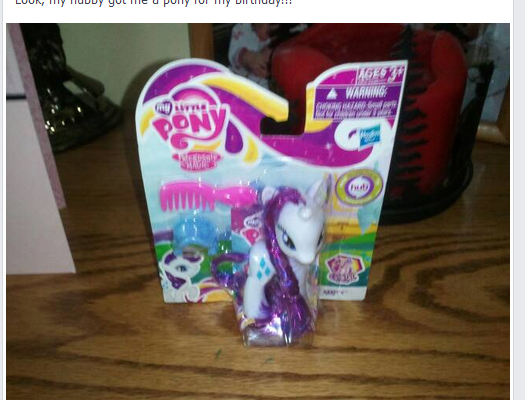- RT @ScottATaylor: Get a Daily Summary of Your Friends’ Twitter Activity [FREE INVITES] http://bit.ly/4v9o7b #
- Woo! Class is over and the girls are making me cookies. Life is good. #
- RT @susantiner: RT @LenPenzo Tip of the Day: Never, under any circumstances, take a sleeping pill and a laxative on the same night. #
- RT @ScottATaylor: Some of the United States’ most surprising statistics http://ff.im/-cPzMD #
- RT @glassyeyes: 39DollarGlasses extends/EXPANDS disc. to $20/pair for the REST OF THE YEAR! http://is.gd/5lvmLThis is big news! Please RT! #
- @LenPenzo @SusanTiner I couldn’t help it. That kicked over the giggle box. in reply to LenPenzo #
- RT @copyblogger: You’ll never get there, because “there” keeps moving. Appreciate where you’re at, right now. #
- Why am I expected to answer the phone, strictly because it’s ringing? #
- RT: @WellHeeledBlog: Carnival of Personal Finance #235: Cinderella Edition http://bit.ly/7p4GNe #
- 10 Things to do on a Cheap Vacation. https://liverealnow.net/aOEW #
- RT this for chance to win $250 @WiseBread http://bit.ly/4t0sDu #
- [Read more…] about Twitter Weekly Updates for 2009-12-19
Make Extra Money Part 2: Niche Selection
If you want to make money, help someone get healthy, wealthy or laid.
This section was quick.
Seriously, those three topics have been making people rich since the invention of rich. Knowing that isn’t enough. If you want to make some money in the health niche, are you going to help people lose weight, add muscle, relieve stress, or reduce the symptoms of some unpleasant medical condition? Those are called “sub-niches”. (Side question: Viagra is a sub-niche of which topic?)
Still not enough.
If you’re going to offer a product to help lose weight, does it revolve around diet, exercise, or both? For medical conditions, is it a way to soothe eczema, instructions for a diabetic diet, a cure for boils, or help with acne? Those are micro-niches.
That’s where you want to be. The “make money” niche is far too broad for anyone to effectively compete. The “make money online” sub-niche is still crazy. When you get to the “make money buying and selling websites” micro-niche, you’re in a territory that leaves room for competition, without costing thousands of dollars to get involved.
Remember that: The more narrowly you define your niche market, the easier it is to compete. You can take that too far. The “lose weight by eating nothing but onions, alfalfa, and imitation caramel sauce” micro-niche is probably too narrowly defined to have a market worth pursuing. You need a micro-niche with buyers, preferably a lot of them.
Now the hard part.
How do you find a niche with a lot of potential customers? Big companies pay millions of dollars every year to do that kind of market research.
Naturally, I recommend you spend millions of dollars on market research.
No?
Here’s the part where I make this entire series worth every penny you’ve paid. Times 10.
Steal the research.
My favorite source of niche market research to steal is http://www.dummies.com/. Click the link and notice all of the wonderful niches at the top of the page. Jon Wiley & Sons, Inc. spends millions of dollars to know what topics will be good sellers. They’ve been doing this a long time. Trust their work.

You don’t have to concentrate on the topics I’ve helpfully highlighted, but they will make it easier for you. Other niches can be profitable, too.
Golf is a great example. Golfers spend money to play the game. You don’t become a golfer without having some discretionary money to spend on it. I’d recommend against consumer electronics. There is a lot of competition for anything popular, and most of that is available for free. If you choose to promote some high-end gear using your Amazon affiliate link, you’re still only looking at a 3% commission.
I like to stick to topics that people “need” an answer for, and can find that answer in ebook form, since I will be promoting a specific product.
With that in mind, pick a topic, then click one of the links to the actual titles for sale. The “best selling titles” links are a gold mine. You can jump straight to the dummies store, if you’d like.
Of the topics above, here’s how I would narrow it down:
1. Business and Careers. The bestsellers here are Quickbooks and home buying. I’m not interested in either topic, so I’ll go into “More titles”. Here, the “urgent” niches look like job hunting and dealing with horrible coworkers. I’m also going to throw “writing copy” into the list because it’s something I have a hard time with.

2. Health and Fitness. My first thought was to do a site on diabetic cooking, but the cooking niche is too competitive. Childhood obesity, detox diets and back pain remedies strike me as worth pursuing. I’m leaning towards back pain, because I have a bad back. When you’ve thrown your back out, you’ve got nothing to do but lie on the couch and look for ways to make the pain stop. That’s urgency.
3. Personal Finance. The topics that look like good bets are foreclosures and bankruptcies. These are topics that can cost thousands of dollars if you get them wrong. I hate to promote a bankruptcy, but some people are out of choices. Foreclosure defense seems like a good choice. Losing your home comes with a sense of urgency, and helping people stay in their home makes me feel good.
4. Relationships and Family. Of these topics, divorce is probably a good seller. Dating advice definitely is. I’m not going to detail either one of those niches here. Divorce is depressing and sex, while fun, isn’t a topic I’m going to get into here. I try to be family friendly, most of the time. Weddings are great topic. Brides are planning to spend money and there’s no shortage of resources to promote.
So, the niches I’ve chosen are:
- Back pain
- Bankruptcy
- Conflict resolution at work
- Detox diets
- Fat kids
- Foreclosure avoidance
- Job hunting
- Weddings
- Writing copy
I won’t be building 9 niche sites in this series. From here, I’m going to explore effective keywords/search terms and good products to support. There’s no guarantee I’ll find a good product with an affiliate program for a niche I’ve chosen that has keywords that are both highly searched and low competition, so I’m giving myself alternatives.
For those of you following along at home, take some time to find 5-10 niches you’d be willing to promote.
The important things to consider are:
1. Does it make me feel dirty to promote it?
2. Will there be customers willing to spend money on it?
3. Will those customers have an urgent need to solve a problem?
I’ve built sites that ignore #3, and they don’t perform nearly as well as those that consider it. When I do niche sites, I promote a specific product. It’s pure affiliate marketing, so customers willing to spend money are necessarily my target audience.
5 Ways to Reduce Temptation and Have a Peaceful dinner
It never fails: you send the kids off to the salt mine babysitter for the evening, cook a nice dinner and light some candles. Then, just as you sit down, the phone rings.
Now you have 2 choices, you can do like me and ignore the phone if it’s inconvenient to answer or you can ruin a romantic dinner. The telemarketers know that, statistically, you are home at dinner time. They don’t care if you are celebrating an anniversary or just trying to connect with your loved one.
Why not preemptively stop the irritation? While you’re at it, stop the junk mail, too. It’s not as hard as you’d think. It’s a simple, almost free process that will not only eliminate the frustration of pointless calls and sorted junk mail, but will also cut down on the temptation of seeing something shiny to buy.
Here are the four steps to a leaner, greener and romantic dinner-making you:
1. Get on all of the Do Not Call lists.
- You can get on the federal list by visiting www.donotcall.gov or calling (888) 382-1222. The tele-sales weasels will have have a month to clear you out of their systems.
- If you still get calls–some calls are still allowed, including political calls, non-profit fundraisers, and surveys–they are still required to maintain an in-house do not call list. Tell them to put you on that list.
- Many states have a Do Not Call list that is entirely independent of the the federal list. This is redundant, but the more roadblocks you put up, the better you will be.
If you are still getting calls, report them to the FTC at:
Federal Trade Commission
Consumer Response Center
600 Pennsylvania Avenue, NW
Washington, D.C. 20580
1-877-FTC-HELP
www.ftc.gov
2. Opt out of junk mail. The Direct Marketing Association manages a list of people who do not want junk mail. This list only applies to members of the association, but most mass-mailers participate. Go to www.dmachoice.org to enroll. It costs $1 to get on the list and will stop most junk mail for 3 years.
3. Opt out of pre-approved credit card offers. Go to www.optoutprescreen.com to remove your name from the lists generated by the major credit bureaus to sell to marketing firms. You can put a halt to this breed of junk for 5 years or forever.
4. Ask them to stop. If you are getting catalogs from a company with which you have an existing relationship, ask them to knock it off. Virtually every one will stop sending you garbage to ensure a continuing business relationship with you.
5. Guerrilla Warfare. If none of this works, there are still a couple of options.
- Keep an airhorn by the phone. They won’t call twice.
- Take everything you receive from a company, stuff it all in the prepaid return envelope they helpfully included, and drop it back in the mail. They only get charged for the prepaid envelopes when they are used, so use them up. It’s illegal to alter them to send mail to other people, but it’s not illegal to mail them all of their own garbage. If you cost them enough money, they will eventually back down.
Horseback Riding Lessons
For the past couple of years, my daughters have been riding in horse shows with a local saddle club. We’ve been lucky in that my wife’s cousin has let us borrow her horse for the shows, so costs have been minimal.
Unfortunately, that horse isn’t available this year. We knew that a few months ago, so the plan was to take a year off from the shows and focus on lessons, to get the girls some real skills. We found a great instructor at a stable about 30 miles from our house. Since we live less than two miles from the border of the biggest city in the state, that’s a comparatively short drive.
We pay her $200 per month for 1 lesson per week for both girls. They each get 30-45 minutes on the horse during each lesson.
Now that show season has started, the plan seems to have changed. The girls will be riding a different borrowed pony tomorrow. The shows cost about $50 for registration, lunch, and gas. Our club has 1 show per month, but my wife has assured me they’ll only be hitting three shows this season and limiting the number of events to keep the cost down.
The direct costs aren’t too bad, but there’s a problem with keeping-up-with-the-Joneses accessorizing. Vests and boots and helmets and belts and shirts, oh my.
I’d guess our costs for the summer will be $300 per month.
One thing we’ve been considering is buying a pony. We can get an older pony for around $500-1000. Older is good because they are calmer and slower. Boarding the thing will cost another $200 per month. We’ve been slowly accumulating the stuff to own a horse, so I’m guessing the “OMG, he let me buy a horse, now I need X” shopping bill will come to around $1500, but I’ll figure $2000 to be safe. We already have a trailer, a saddle, blankets, buddy-straps, combs, brushes, buckets, rakes, shovels, and I-bought-this-but-I-will-just-put-it-in-the-pile-of-horse-stuff-so-Jason-will-never-notice stuff. We’re certainly close to being ready to buy.
(FYI: If you’re starting from scratch, don’t think you’re going to get into horse ownership for less than $10,000 the first year, and that’s being a very efficient price-shopper.)
So we’re looking at $5400 for a horse, gear, and boarding the first year. If we cancel the lessons, by spring we’d have $2000 of that saved and most of the rest can be bought over time.
On the other hand, if we go that route, we’ll never save enough to buy the hobby farm we’re looking for.
Decisions, decisions. I should just buy a new motorcycle. Within a year, I win financially.
What Is Your Binary Options Strategy?
 When you are just entering the world of binary options trading or investing, you may be on the receiving end of a lot of advice. It is not uncommon to hear people tell you to implement different gambling strategies because binary options are based on chance more than anything else. You will also hear a lot of advice from those who say there are many good ways to develop an effective strategy using indicators and market signals. Some will insist that with proper analysis of market data, a solid strategy can be developed too.
When you are just entering the world of binary options trading or investing, you may be on the receiving end of a lot of advice. It is not uncommon to hear people tell you to implement different gambling strategies because binary options are based on chance more than anything else. You will also hear a lot of advice from those who say there are many good ways to develop an effective strategy using indicators and market signals. Some will insist that with proper analysis of market data, a solid strategy can be developed too.
Are they all correct? Interestingly enough, the answer is yes. The reason for this is simple, and as one expert writes, “there is no such thing as a perfect strategy for every trader. There is only a best strategy for each individual trader.” Thus, your strategy has to be shaped around a few things:
- Your willingness and ability to follow your chosen strategy.
- Your personality. For instance, are you restless if you are taking the safe route or a higher risk strategy?
- Your budget and goals,
Identifying the answers to these questions is the first step to formulating a strategy. You should also understand that the winning percentage of most strategies will be somewhat constant, but the total number of successful trades varies on an individual basis and is based entirely on the strategies used.
For instance, some investors want a high percentage of winning trades and are more comfortable with risk averse trading. Others are ready to take more risk and are entirely comfortable winning fewer trades if the returns on winning trades are dramatically higher. This enables them to implement higher risk trades. The interesting thing about strategies and the kinds of trades they generate is that they are all built from the same data.
The Data of Strategy
For example, almost all strategies will look at issues like market trends, trading trends, highs and lows, reversals, and various kinds of indicators. The reason that high and low trends pay off in strategy development is simple: binary options trading applies to whether or not an asset rises above a strike price or doesn’t. It is the proverbial “yes or no” part of the proposition and analysis for either outcome pays off.
As an example, a lot of risk-averse investors will look for breakouts. They use these for trend line investing, which can be as brief as sixty seconds to a day, but can be used to coordinate investing in the direction of a short trend. Although this seems complex, it really is not. The key is that analysis cannot be broad and across all available markets. Instead, focused analysis on a specific area will allow even a novice investor to analyze for a breakout and then invest in binary options accordingly.
Just being able to detect a reversal or a downward trend over the course of a day can yield a very rewarding investment. The key is to understand your strategy based on your budget, personality, and your ability to stick with the strategy, even if it does not yield immediate success. When you do this, and use the right tools for analysis, you can create an effective strategy that brings you closer to your goals.
This is a guest post.
5 Things to Do in the New Year

- Image via Wikipedia
CNN Money has an article up on 5 things to do this year. After posting a similar article a couple of weeks ago, I thought it’d be interesting to post about someone else’s perspective.
1. Shop for a no-fee checking account.
If you are paying fees for a checking account, go somewhere else. There are so many alternatives available that you shouldn’t be throwing money away. Ally Bank has a great no-fee checking account, as does INGDirect, though ING won’t let you write paper checks against the account. The same principle applies to credit cards. If you have a card with an annual fee and you aren’t getting some monster services or rewards to go with it, run away.
2. Save your raise.
I don’t necessarily agree with this one. If you are in debt, it’s better to use the raise to pay off that garbage, first. When I got my last raise, I immediately boosted the automatic payment for my car to use every new penny. I’ve never had the money available, so I haven’t missed it. Whatever you do, fight lifestyle inflation. Just because you have some more money doesn’t mean you need to spend it. At my last job, I got a substantial raise, so I bought a new car, only to get laid off a few months later.
3. Go for a checkup
Wealth doesn’t matter if you squander your health. Go get a physical. Every disease is easier to treat if you catch it earlier as opposed to later. Don’t make the mistake of running your body into the ground. You will regret it later. Effective this year, most health plans will cover a physical with no copay, co-insurance, or deductible allowed.
4. Score a better rewards card.
B***-****. If you’ve still got debt, don’t concentrate on using more of it. Get that crap paid off. If you’re out of debt, look into getting a rewards card that aligns with your goals. If you like to travel, get a card that gives you frequent flier miles. Otherwise, I’d go with a cash-back rewards card.
5. Use your vacation days.
37% of Americans don’t take all of the vacation to which they are entitled. That’s insane! We work harder and better when we have time to recuperate and relax. Unfortunately, I usually fall into that unfortunate 37%. My vacation resets on February 1st, and this will be the first year in a lot of years that I haven’t had to roll it over or even lose some.
What is your financial plan for the new year?




